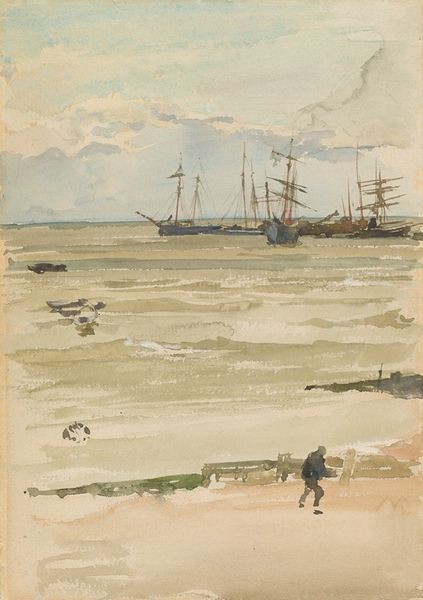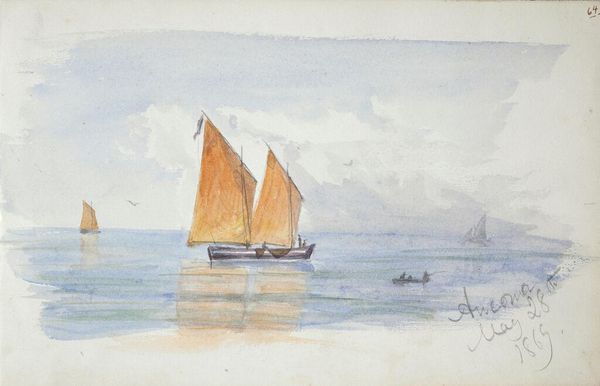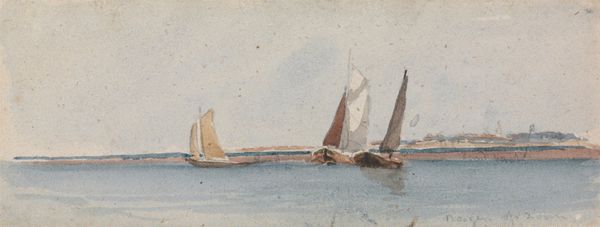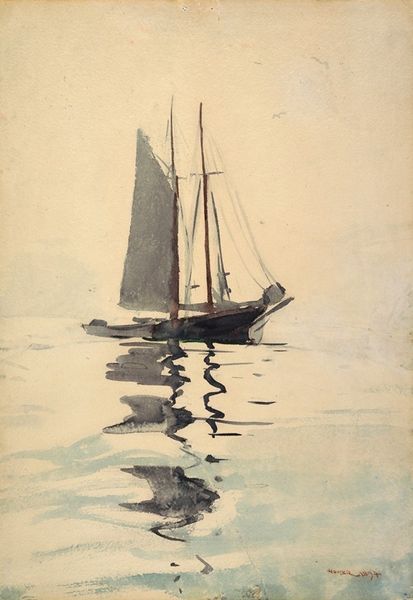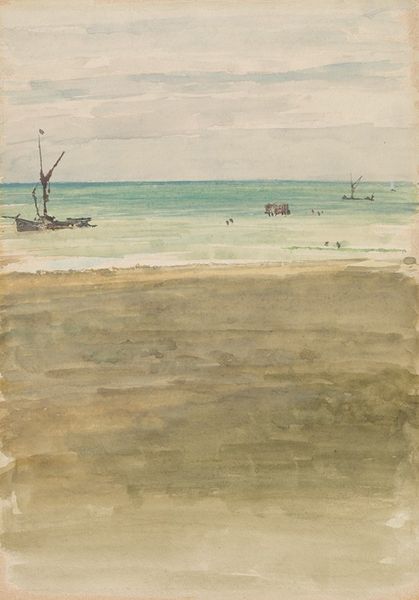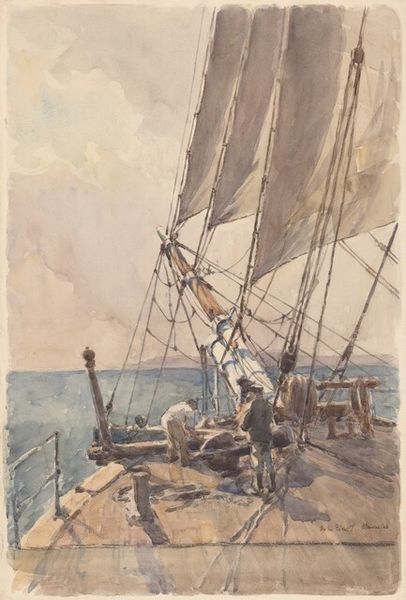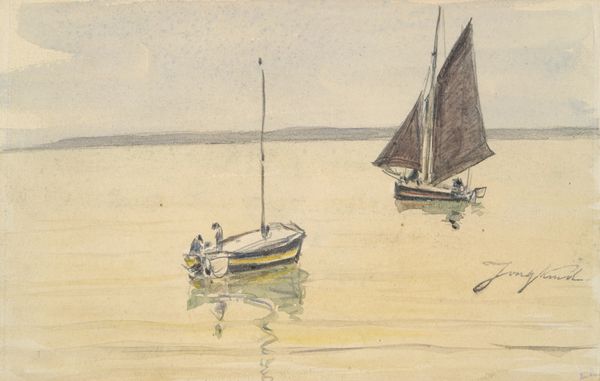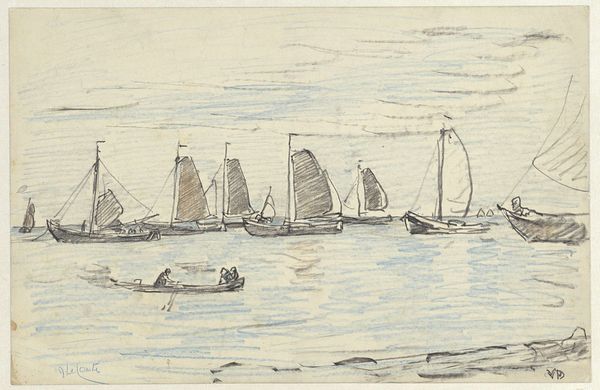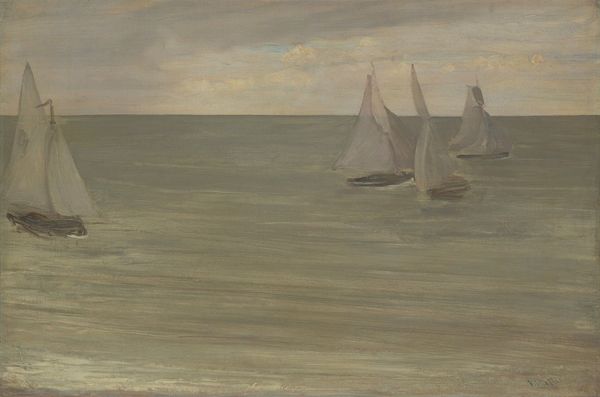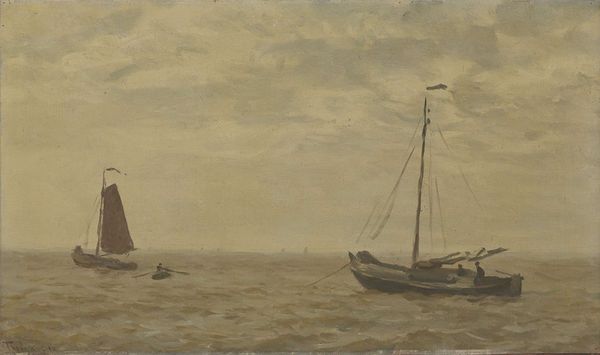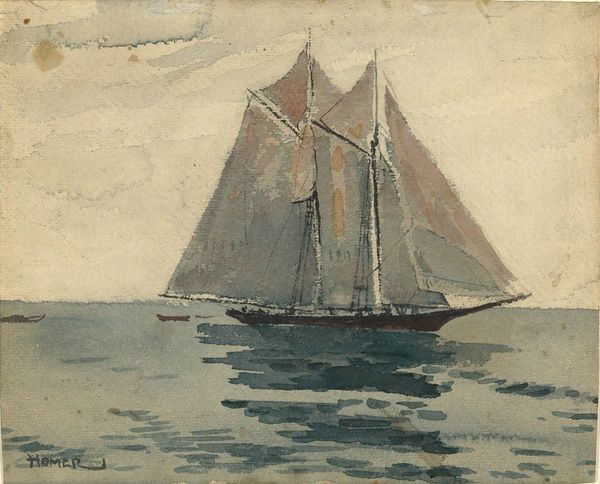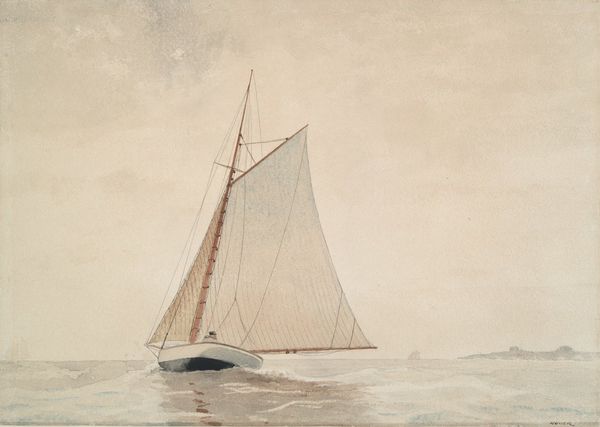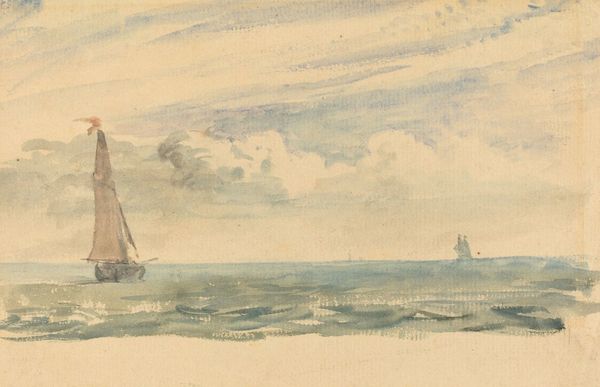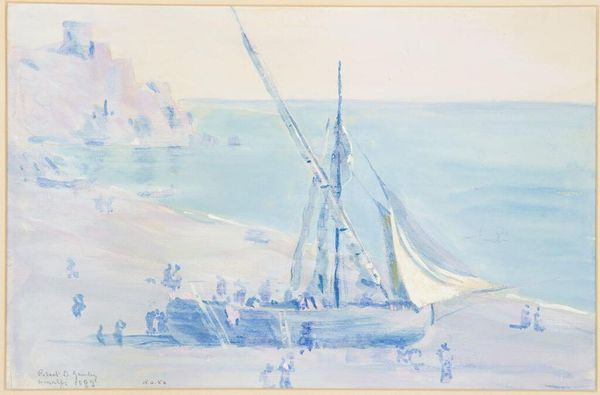
watercolor
#
water colours
#
impressionism
#
landscape
#
oil painting
#
watercolor
#
watercolour illustration
Copyright: Public Domain: Artvee
Curator: Looking at James Abbott McNeill Whistler's "Southend–The Pleasure Yacht", created between 1882 and 1884, I am immediately drawn to the subtle tonal variations achieved through watercolor. Editor: There's a quiet stillness, a pervasive calmness in the arrangement; it’s dreamlike and almost nostalgic. It feels both universally applicable and historically situated. Curator: I find it fascinating how Whistler employs watercolor to capture the shimmering light reflecting off the water and how it interacts with the vessels. We can think about how this scene portrays the commercial fishing boats as they come closer to industrial leisure pursuits of the period and what materials the laborers used for these boats. The materiality really makes this work feel significant in the understanding of the history of craft. Editor: Absolutely. Thinking about those labor conditions and material means, who has access to this seaside leisure is paramount to the setting of this work. Also, what is conveyed by the perspective, this particular vantage point, what subject position is assumed. The work engages with the gendered idea of leisure space through an exploration of identity and class. Curator: It also makes one consider Whistler’s own craft. How was it commodified in comparison to other craftsmen who also rely on the natural surroundings as a commodity, particularly within seaside communities? Editor: That's a vital connection to consider. And I believe there's also something quite radical in the work of Whistler in the everyday mundane subject of leisurely interaction. What does pleasure means during the birth of an industrial leisure class that came with Victorian era colonialism? I think in relation to postcolonial theory and visual representation the implications are vast in defining modern society. Curator: By taking these artistic gestures to examine Whistler’s process alongside larger structural issues of industrialization and economic conditions, it’s quite clear we are also looking into our current conditions of globalization and material production. Editor: Yes, and understanding the larger social-historical contexts as a starting point enables one to engage and interpret through these shifting narratives and perspectives that you mentioned. Curator: Understanding both material means and larger contexts gives insight in the social framework from which Whistler made art. Editor: I find this view allows me a deeper appreciation and understanding, prompting further examination through dialogue across these theories.
Comments
No comments
Be the first to comment and join the conversation on the ultimate creative platform.
